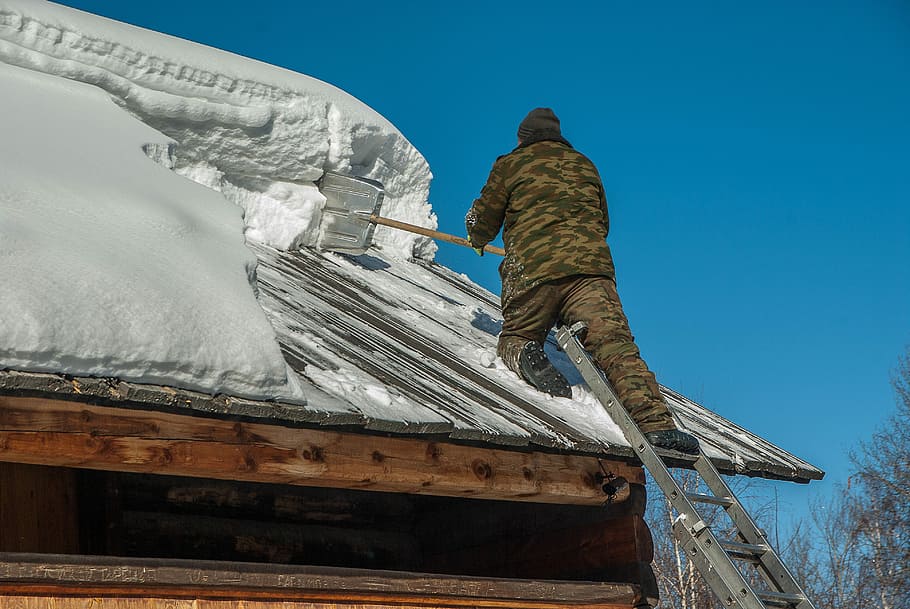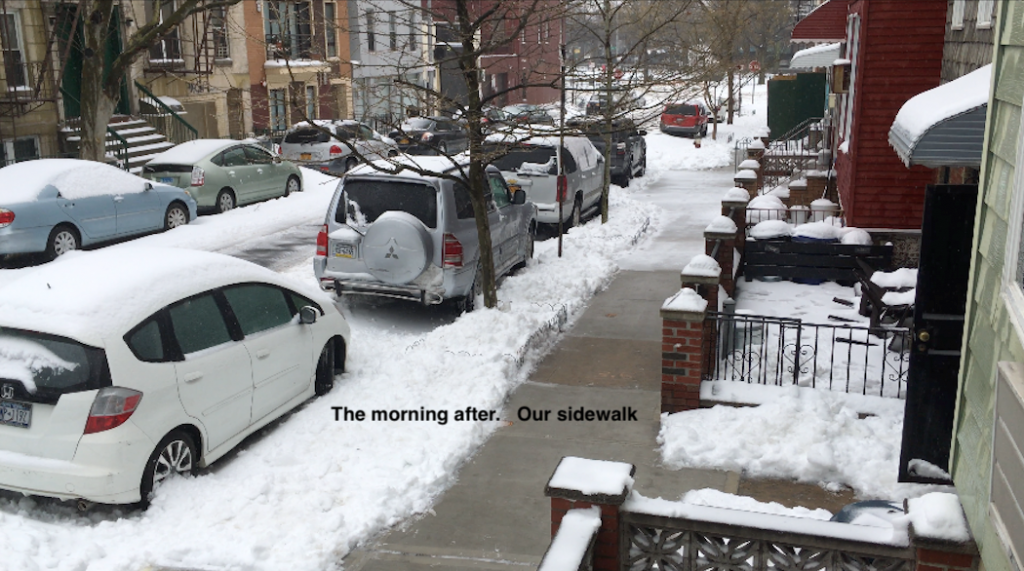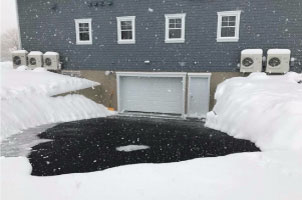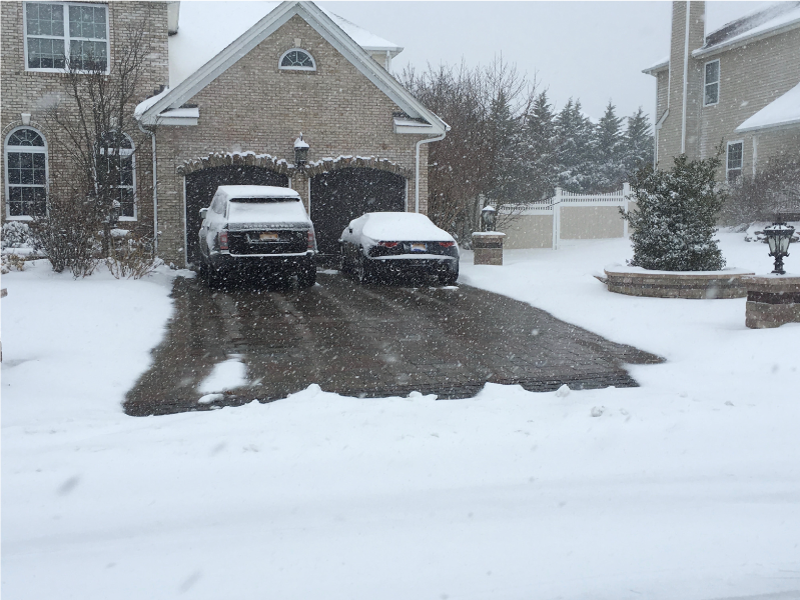If you live in an area with harsh winters, then you probably have experienced an ice dam at the edge of your roof or have seen one on your neighbor’s roof. Your first inclination may be to remove the ice and snow with the tried-and-true solution you have been using on your sidewalk and driveway for years – rock salt. Unfortunately, there are serious concerns associated with using rock salt on the roof that you may not be familiar with. Before you throw a handful of rock salt on the roof, read this article.

What Are Ice Dams?
An ice dam is a raised area of ice that develops at the roof edge and in the valleys, which prohibits melting snow and water from running off the roof. The water pools behind the dam and refreezes, causing the dam to get larger with every freeze-thaw cycle. This can lead to serious property damage if not corrected.
How They Form
The normal formation of ice dams is caused by warm air in the attic leaking through the roof above the eave line and causing the snow to melt. As the melted snow drains toward the gutter, the heat from the attic is no longer available and freezes, forming an ice dam.
As the snow continues to melt, the warmer water runs to the dam and over it, refreezing in the process. This cycle produces the icicles that hang over the eave or gutter, and continues to thicken the dam, further aggravating the problem.
Damage They Cause
Ice dams can be the root cause of seen and unseen issues. If water backs up under the shingles, it can lead to the growth of mold and mildew. When excess moisture refreezes, it can loosen or tear off shingles, resulting in wet insulation and exposing your home to structural damage. If the ice dam is large enough, it can rip your gutters off the fascia. In addition, a massive dam can fall off the roof as the weather warms up, posing a serious potential for bodily injury.
The Best Ways to Get Rid of Existing Ice Dams
Calcium Chloride
Calcium chloride is not salt, nor rock salt. It is a naturally occurring product found in limestone, and it is commercially manufactured by creating a reacting limestone with hydrochloric acid. It is sometimes sold under the label of “Ice Melt”.
Calcium chloride has an advantage over rock salt, because it will work at temperatures as low as -20° F. Though it is safer and more effective than rock salt, calcium chloride is more expensive and has a negative effect on wood and concrete.
If you are going to use calcium chloride, it is recommended you fill socks with it and hang them over the ice dam. It can be risky, since you need to get on the roof to use this method.
Do Not Use Rock Salt
Rock salt is suitable for short-term use on sidewalks and driveways, but it is not a replacement for calcium chloride, as the two are totally different in chemical makeup and effectiveness on ice. As a solution for removing ice dams, rock salt is an inferior option. Consider the following:
- It is not effective: Rock salt will melt ice at temperatures between 20° and 32° F, which will make it useless in many parts of the country that reach temperatures down to zero degrees Fahrenheit or lower. In addition, it would require too much weight in rock salt to melt a large ice dam.
- Rock salt is damaging to plants: As the salt melts, it will run through the gutter system, into your yard and plant beds. Sodium chloride in large quantities can be poisonous to green plants, as it blocks their ability to absorb nutrients.
- Sodium chloride can rust nail heads in the shingles, causing stains to form on the roof. It can also damage gutters, flashings, and other metal fittings attached to the roof.
- It can be effective on concrete driveways and sidewalks, but rock salt is bad for bricks and other masonry products, leading to early deterioration.
Hire a Professional Steamer
A professional steamer is not someone using a pressure washer with hot water to remove an ice dam. Steaming uses cold water converted into low pressure steam, and it is applied with a special nozzle that melts through the ice and snow without damaging the shingles below. A pressure washer uses high pressure that can knock the granules off of shingles and possibly cut through them if the operator is not careful. If you hire a professional steamer, you should familiarize yourself with the equipment so you can tell the difference.
Break up Ice Dams with a Mallet
Using a mallet to break up an ice dam may seem inexpensive, but if you are not comfortable standing on your roof when the weather is nice, you will not want to be on it when the roof is covered with ice and snow. Using a mallet or any other heavy object to break up the ice will require you to get on the roof, or at least lean a ladder against the gutter while you swing away at the ice. The mallet is heavy and may cause you to get off balance and fall. The other danger is breaking through the ice dam with such force that the mallet damages your roof. Neither option is desirable. It’s best to hire a professional instead of attempting it yourself.
Prevent Ice Dams from Forming in the First Place
Staying ahead of the ice dam is your best bet, and there are a few measures that can be taken to achieve this.
Rake Your Roof
Looking at the picture, the danger is obvious. You must get up on a ladder and eventually onto the roof to get all the snow off. If you remove the snow by hand, a snow shovel limits your reach and requires a ladder. Hand removal is also time-consuming and exposes you to the dangers of extreme cold. Some companies manufacture snow rakes with long handles that can help you get at the snow while standing on the ground. However, two-story homes will need a ladder regardless of the tool you are using to rake with. This method is not recommended. You are better off hiring a professional.
Improve Insulation
Since a major factor affecting the formation of ice dams is the difference in temperature between the part of the roof above the attic and the section above the eave that receives no heat, improving your attic insulation is an excellent preventive measure.
The best insulation on the market is spray-in foam applied by professionals. It can fill all the voids that are the culprit in letting heat escape.
Install Roof Deicing System
A professionally installed roof and gutter deicing system is the best method to prevent ice dams, while keeping your home and family protected from the dangers associated with removing them.
What It Is
A roof and gutter deicing system is composed of heat cables and temperature sensing devices that work together to keep the area above the eaves, as well as the gutters and downspouts from freezing.
How It Works
Self-regulating heat cables melt the snow and ice as it makes contact with the shingles. The sensing device is constantly activated and adjusts the amount of heat developed in the system as the temperature changes. The heat cables run along the eaves of the roof, above the shingles, and through the gutters and downspouts, ensuring that the area’s most vulnerable to freezing are kept open and the water flows away from the home or business.
Cost
The cost will vary with the size of the home, but an average size home can choose between two basic options – a constant temperature system or a self-regulating system.
The constant temperature model costs less, since it will keep a steady temperature throughout the season, but you will lose the advantage of saving energy when it is not needed. This configuration would start between $400 and $500. The self-regulating system will use more precise sensing equipment that will maintain the heat as needed depending upon the weather. These systems will start at about $2,500.
Yes, Rock Salt Is Bad for Your Roof — Choose Warmup Instead
Rock salt will do more harm than good on your roof, so it should be eliminated as an option for deicing your home. The sensible solution is to have a system developed by engineers to perform the task required, while you relax comfortably in your warm home.
Saving a few dollars by attempting to use home remedies will never pay you back for the time spent deicing by hand, or the danger you may place yourself in by climbing on the roof. Warmup has been designing electrical heating systems for underfloor, roof, and driveway applications for 25 years, and has systems operating in 70 countries.
Contact us today to learn more about roof deicing systems from Warmup to prevent ice dams.







![Thumbnail [200x250]](/wp-content/uploads/Indoor-Systems-Page-Image.png)
![Thumbnail [200x250]](/wp-content/uploads/image-13.png)
![Thumbnail [200x250]](/wp-content/uploads/Projects-Image.png)